Nowadays you can see every part of the world from where you are right now, reading this. Image searches are just a few taps away.
But is it really the same? Seeing the beauty of the natural world from a camera lens, no matter how good that camera is, remains disconnected from the reality of the moment. You can’t feel the crisp mountain wind from an image. You can’t hear the wind passing through vast, wild gorges in a photo. You can’t smell untouched, pure spring waters with your phone.
With stunning landscapes and a diverse range of terrains, North America is a hiker’s paradise. The United States, in particular, boasts some of the most breathtaking hiking trails in the world. From the rugged mountains of the west coast to the lush forests of the east coast, the USA has something for everyone.
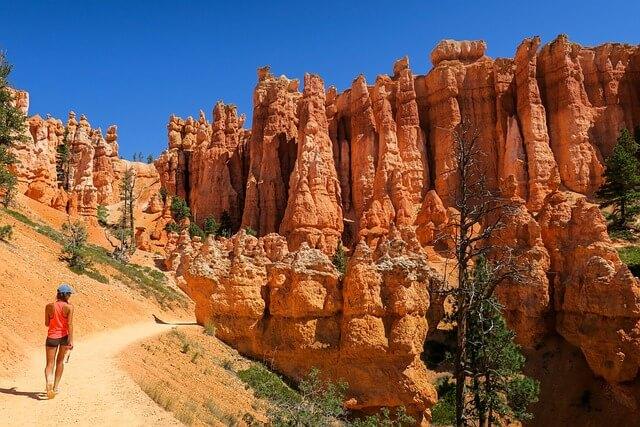
Hiking is a hobby for people who want to be where those wonderful sights are, to see them with their own eyes and reach them with their own feet.
One could spend their life hiking through all the world’s trails and never leave their home country. All those amazing sights are available from your own backyard if you’re near enough. Here is a list of North America’s best of best hiking trails – just as a place to start.
In this article, we will explore the best hiking spots in North America, with a specific focus on why the USA is an excellent destination for hiking enthusiasts. Whether you’re a seasoned hiker or a beginner, the USA has countless hiking trails that will take your breath away.
1. Grand Canyon National Park
Starting off with an obvious one, if you want to get serious about hiking through North America’s best trails you may as well go somewhere popular.
The Grand Canyon is one of the most scenic open gorges in the world. If you’ve only seen it in pictures or on screens, it’s far bigger in real life. It almost seems unimaginable to walk the whole thing, especially in a day – and it is. But there are plenty of trails to choose from, from the mild-mannered guided tours to the long and winding rocky paths to the valley below.
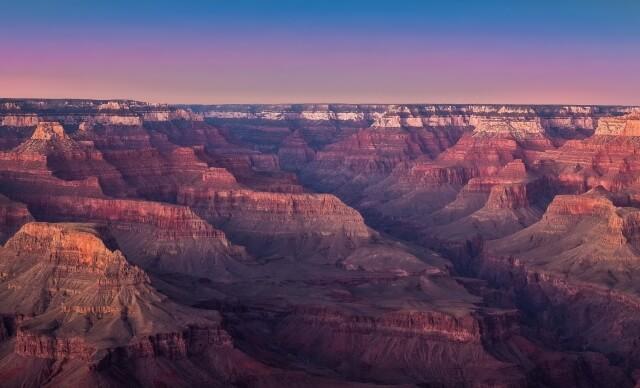
The Grand Canyon is a signature piece of the American wilderness and one of the most influential landmarks of the National Park program. It’s also one of the busiest places one can go just for a hike.
If you’re big into hiking as a social scene, as a place to meet people and appreciate nature together, helping one another along the trail, then it’s an all-year adventure waiting for you to arrive.
It’s an all-year attraction with various trails along its north and south rims with their own level of associated difficulty. It’s like a hiking theme park. There’s too much to do in one day, so get a map and plan your journey well ahead of time.
2. Yellowstone National Park
Yellowstone of Wyoming (and parts of Montana) is an idyllic place where you can watch hot water explode out of the ground at regular intervals and enjoy the sulfuric smell of one of Earth’s most incredibly active volcanic hotspots. There are few places in North America you can go to see anything close to a hot spring.
There’s nowhere more famous, or hotter than Yellowstone. Obvious paths and trails would be to see Old Faithful and the geyser fields, but there’s far more to the park than that. For one, you can walk straight to the Grand Canyon. There’s more than one Grand Canyon. That Yellowstone is carved out by the Yellowstone River.

Instead of red and orange, you can see the effects of the uniquely mineral-rich waters of the geyser area across a geological era on the cliffsides. You wouldn’t believe all the colors a mountain path could become given time and erosion until you see it for yourself.
If you find hot water too hot to enjoy in the summer you can always defer your trip to the fall or winter and be refreshed by the heated air all around you.
3. Zion National Park
The Rocky Mountains hold many scenic vistas hidden within rough valleys and across long and winding nature paths. Walking is most of the fun of hiking, it’s all journey, and there’s a great journey worth taking through Zion National Park.
This secret refuge has been exposed of late and has become one of the most popular touring spots in all of Utah outside of the cities. The shrub-covered apricot-colored river valley features unclimbable peaks and very easily walkable pathways that lead through all sorts of natural settings.

You’re free to explore as far as you’re willing to push yourself. Wade through the Virgin River for a cool dip before scaling the steep terrain up Angel’s Landing. Walking down the river will give you a view after a gorgeous view comes day or night.
Enjoy a starry sky without any obstructions at all. It’s hard to believe you’re within driving distance of Las Vegas when you can see every star in the heavens from this peaceful place.
If you need some help moving around, a shuttle service is available anytime but the winter. If you want a closer view of the Kolob Canyons deeper into the pristine valley you should prepare yourself for a nice, quiet hike.
4. Yosemite National Park
Another famous park that everyone has heard of in one way or another is Yosemite National Park. As far as parks go, it’s nice. Scenery? It’s got plenty; mountain views, waterfalls, sequoia groves, lakes, and valley plains between steep, white mountain heads.
It’s also got about 800 miles worth of dedicated, mapped-out walking paths. Yosemite isn’t a place you go once and say that was nice, I saw enough. It’s a place to return to, maybe a few times, and always find a new way to travel through it.

Even the harder trails maintain their own dedicated crowd. You’ll rarely be alone, which is great for safety’s sake, as you make your way across the Half Dome trail to catch a glimpse at its namesake.
If your vision of California is nothing but urban landscapes and Hollywood coastlines, this is a great place to remind you of the scenic beauty hiding in and around its mountains.
There are enough trails to cover any level of experience, those who may want to start hiking or those who wish to set out and find their own path into the wilderness to see what’s gone unseen for far too long.
5. Mount Katahdin
Moving away from the West Coast, there are plenty of places worth hiking near and around the Atlantic Coast. Naturally, there are the historic city walkabouts and the national gallery of the capital, but for a more seasonal route you can travel up to the New England states to take in new encouraging sights at every turn of the weather.
In the furthest northern (connected) state is a trail up its tallest mountain. The Mount Katahdin trail in Maine offers a beautiful panorama of seasonal changes along a peaceful wooded path up the soft incline of what was once called “The Greatest Mountain.” Ignoring hyperbole, it’s still very great.
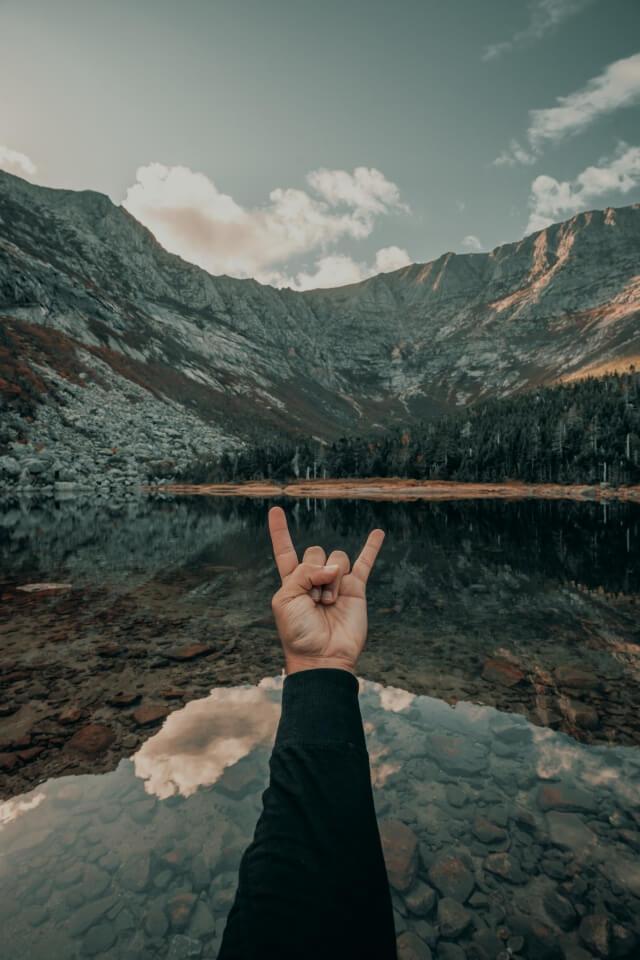
Arriving in the spring you can see wildflowers blooming all through the evergreen woods and in the meadows which run down the sides of the mountain from on high. You can take a rest at the placid Darcy Pond and take in the quiet scenery.
In the fall, when all but the sturdiest leaves change, you are treated to a kaleidoscope of colors reaching as far as the eye can see, including green. It’s a perfect place to look down at the world changing and feel like time isn’t moving.
6. White Mountain National Forest
New Hampshire is not to be outdone in terms of gorgeous New England season-changing scenery. Though one of the smallest states, it has some of the most well-preserved natural beauty relative to its landmass.
One of the best trails leads around White Mountain, and one of the hardest trails to hike on the East Coast is located there. It’s called the Black Angel Trail, the black diamond course of hiking. If you think hiking could use a little more bouldering and steep incline scaling, this is the place you want to go.

And it’s worth the extra effort. Each set of exercises you need to do in order to surpass the hurdles that untouched nature provides for you are met with beautiful sights not easily captured for public view.
Go at the right time of year and you can watch fields of flowers in full bloom, or see hundreds of miles worth of trees changing color all around you. It’s a treat well-earned. For those hiking enthusiasts who want a rewarding challenge, there are few better places to get it than here.
7. Parc national du Fjord-du-Saguenay
America isn’t the only North American country with beautiful landscapes. Strictly speaking, it’s not even the biggest. Though most of Canada is locked away under permanent icecaps and arctic frost, some of that frozen water can be downright gorgeous, eh?
Or, oui, if you’re heading to eastern Quebec. You can take a walking tour of a frozen fjord trail called Saguenay Fjord. It’s far north of Quebec City and brings you through a fir and birch forest to the scene of a 600-foot sheer face of an icy schism.
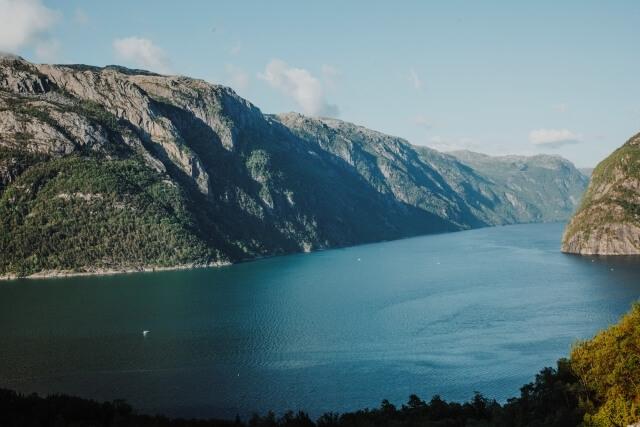
Arriving in the summer will greet you with the cleanest, bluest water between two cliffsides you might ever see. The purest melted glacial water is there for you to awe at, carving on a path of ancient ice moving at a rate of mere inches per year over the course of millennia.
In the winter, if you’re well dressed to handle the cold, the water turns to ice and you can walk right across it. Skip the boating season if you want to take an up-close tour of this water. This is a hiking guide after all. If there’s a way to go hiking across an entire body of water this is how it’s done.
8. Rocky Mountain National Park
There is a term in mountaineering called a “fourteener”, a mountain reaching over 14,000 feet above sea level. There are a number of them all within a day’s distance of each other in Colorado alone, and nearly all of them require gear and training, and a steel will to achieve.
However, if you want to keep your feet always on the ground and your hands free of any picks or ropes, you can reach the summit of the Long Peaks Climb by hiking. It’s the highest peak in Rocky Mountain National Park, though far from the most challenging climb in the Rockies themselves.
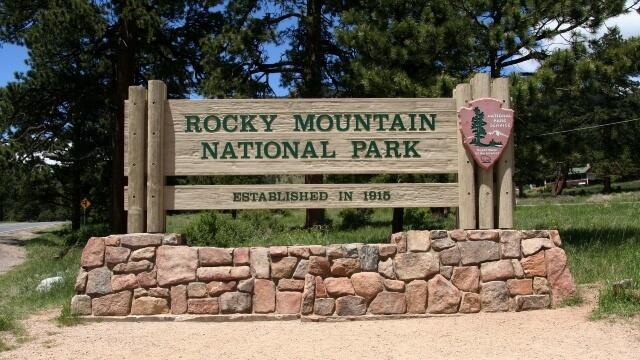
It’s not easy, and not in the same way as other hiking trails. This one isn’t all about advancing over rough terrain or managing pace and snacks while taking in the view.
Going that high up is a challenge in itself. It’s where the air gets thin, fatigue sets in faster, and where the weather gets nastier with fewer obstacles to stop it.
Going on a great day, with mild warmth and little wind, you’ll still feel the drag in your lungs before your legs get worn out. But it will be worth it to say you climbed a mountain without ever having to use your hands.
9. Banff National Park
Another part of the Rockies, but up in the Yukon territory of Alberta. It comprises a territory roughly equivalent to a major county with over 1,000 miles of dedicated and maintained walking trails throughout the seasons.
Going up to Banff assures you a long stay if you aim to see it all. Really the best way to see most of Banff is to just move nearby and stay for a while. Even the locals can’t get enough of the place and its vast array of scenic vistas. You get all kinds of forests, perennial pines, and seasonal spruce, along with tree-like rocky hoodoo valleys.

The Tunnel Mountain Trail brings you to all the best parts of the Rocky Mountains, inside and out. You get to view the mountaintops from all the best angles without risking the injuries needed to climb them.
Or you can tour the Plain of Six Glaciers Trail to see the still active, still frozen, and still majestic glaciers which carved much of the park’s landscape themselves over thousands of years. You’ll be walking through pre-history on the approach to the icy behemoths and still be back in time for some Canadian hospitality.
10. Glacier National Park
Of all the states to visit, in nearly any publication, Montana rarely makes the list of tourist spots. Montana rarely makes any kind of list. It’s one of the least populated states in the country, and one of the most sparsely populated areas in North America that is, itself, very habitable. It’s no desert or tundra or land of impassable mountain mass despite being named “Mountain”. And maybe that’s what keeps it so beautiful.
Just on the border with Canada, the Glacier National Park of northern Montana is the reason to visit the mountain state. Glacial freshwater lakes and rivers fill the valleys of the park and spread into the meadows where wild goats roam.
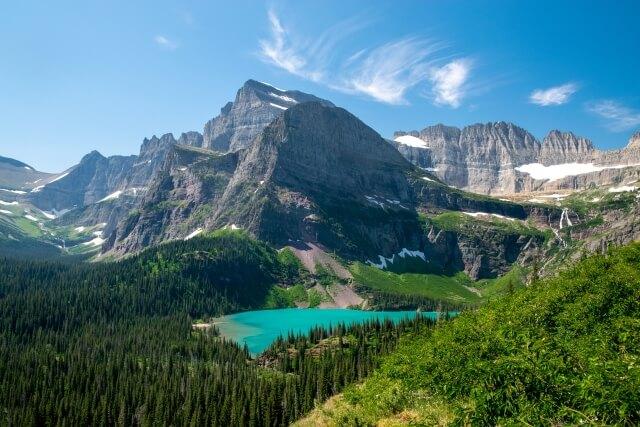
Bodies of water like huge mirrors spread out so you can see the mountain vistas even if you look down. Trails are kept maintained enough that they are accessible by wheelchair so anyone can enjoy them.
Start easy with the Trail of the Cedars through the impressive forest or jump right up to the Grinnell Glacier trail to see just what changes giant ice chunks can do to the environment in enough time.
It’s one million acres of uninterrupted landscape. It has 700 lakes and two mountain ranges, meeting occasionally to form river valleys and waterfalls that feed the sprawling forest.
If you just want to enter the wilderness and merge with it, vanish for a while, and tent out under the stars in this crisp northern wildland, take a turn off a beaten or boarded path, and see whatever you want to see, this is the place for you. Pick a direction and go and you will find beauty. It is a wonderful, wild experience to hike through.






